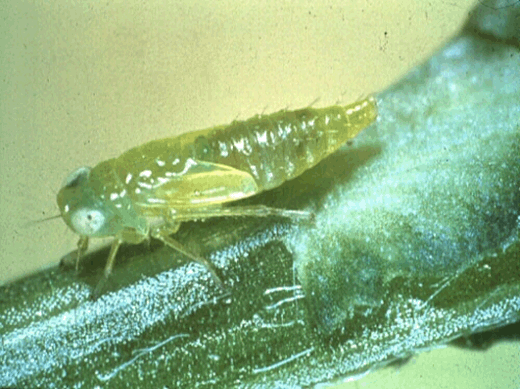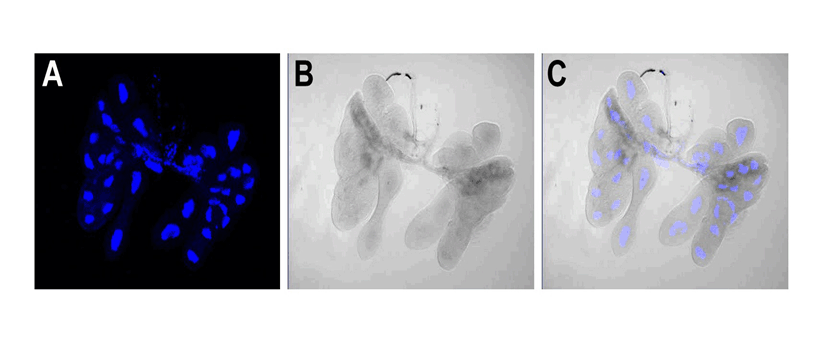|
Post by Chris Taylor This week’s Colloquium was the first of the semester where a grad student in our department defended their dissertation. Bridget DeLay’s work, “Symbionts associated with the salivary glands of the potato leafhopper, Empoasca fabae, and their function when feeding on leguminous hosts” was a particularly interesting topic for me since I work with the symbionts of the brown marmorated stink bug. Mutualistic associations between animals and microbes have been documented in many taxa, so it is not surprising that these relationships are found in a diverse assemblage of insects. The field of insect-microbe interactions is a fast growing and exciting branch of entomology. With the relatively recent increase in the development and availability of genetic tools for identification and sequencing, more and more of these relationships are being uncovered. We have barely scratched the surface in terms of understanding the scope of these relationships and the roles that they play in the biology of the host organism. The microbial symbionts of insects usually have very intimate relationships with their hosts. Therefore, these symbionts are usually obligate (association is required for survival), vertically transmitted (parent to offspring), and have a reduced genome. They have a variety of functions, one of the most prominently studied being their role in diet supplementing. Most blood, xylem and phloem feeding insects have symbionts, which aid the host by providing the essential amino acids or vitamins that their nutrient-deficient diets cannot provide. Most described symbionts have been found in the guts of their hosts, but recently they have also been isolated from the salivary glands of some insects. The potato leafhopper is a highly polyphagous, native agricultural pest that causes a condition known as ‘hopper burn’ (here and here), which causes yellowing and stunting of the plants on which it feeds. Although Paul Buchner, one of the most well known researchers of insect-microbe interactions, referred to the Auchenorrhyncha (the suborder of insects to which the leafhoppers belong) as a “fairyland of insect symbiosis,” Bridget was the first to look at a cicadellid leafhopper to determine its symbionts. She identified two: a species of Wolbachia and a species of Sulcia. By using antibiotics to produce aposymbiotic (symbiont-free) leafhoppers, she investigated survivorship, fecundity, and nymphal survival when the symbionts were not present. She determined that both nymphal survival and survivorship were decreased when the symbionts were removed, indicating that the symbionts are necessary for success of the host leafhopper. Bridget also wanted to look at what role, if any, the symbionts played in feeding on plants by the leaf hopper. She allowed symbiotic and aposymbiotic leaf hoppers to feed on alfalfa and fava beans, and showed that symbiotic leaf hoppers reduced photosynthesis rates in alfalfa and fava beans as well as transpiration rates in alfalfa. In another study, she applied plant hopper saliva to the stems of plants and data suggested that the symbionts may actually suppress wound response pathways in the plants while the leaf hoppers feed. Bridget sequenced the 1st transcriptome data for cicadellid salivary glands that is now available in GenBank (see picture citation below). This work provides an insightful look into the intimacy of these insect-microbe interactions. Her research suggests the microbes aid the leafhopper in its feeding and contribute to the damage the plant endures: a very novel and understudied aspect of insect-microbe biology. With the advent of genetic identification tools, our knowledge of insect-symbiont interactions will continue to increase. This also opens up the possibility to exploit these symbiotic relationships for the management of pests like the potato leafhopper. More and more work, Bridget’s included, is showing that these associations are vital to the success of the host insect, and the disruption of this relationship may turn out to be a useful management tool for pest insects About Chris:
Chris Taylor is a PhD student with focal areas in IPM and insect-microbe symbioses. He studies the brown marmorated stink bug (BMSB), and the focus of his research is on understanding the relationship between BMSB and its gut symbionts to determine whether exploiting this relationship is feasible in management programs. Comments are closed.
|
Categories
All
Archives
June 2024
|
Department of Entomology
University of Maryland
4112 Plant Sciences Building
College Park, MD 20742-4454
USA
Telephone: 301.405.3911
Fax: 301.314.9290
University of Maryland
4112 Plant Sciences Building
College Park, MD 20742-4454
USA
Telephone: 301.405.3911
Fax: 301.314.9290



 RSS Feed
RSS Feed




